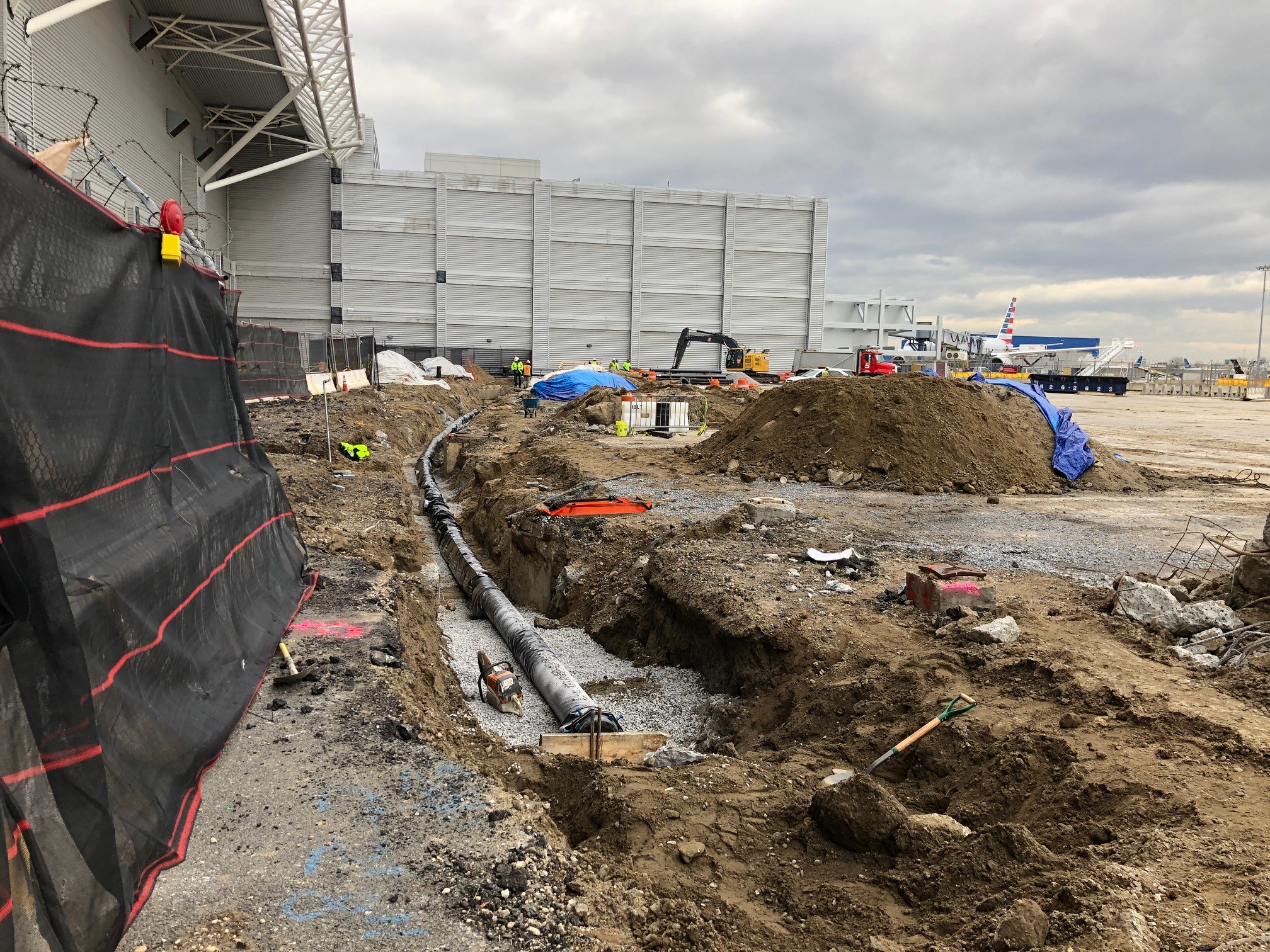
Demand at John F. Kennedy (JFK) International Airport is expected to increase to 100 million annual passengers by 2050. Due to the fragmented nature of previous terminal development, an overall master plan was needed to guide future development to allow JFK to meet the needs of its growing passenger volume. Phase I planning work for future airport development, including development of an airport master plan, began in 2017, and Phase II planning efforts started in 2018. The JFK Redevelopment Program consisted of overall airport redevelopment, including complete redevelopment, modification, and / or expansion of the airport’s terminals. Terminal 2 was demolished and replaced with an expanded, completely rebuilt Terminal 1, and the new Terminal 6 replaced the older Terminal 7, while Terminals 4, 5 and 8 were modified and expanded to better accommodate passenger volume and improve connectivity airport-wide. The program also included facilities outside the terminals, such as capacity improvements for AirTrain JFK, a new multi-use aircraft facility shared among all air carriers, extension of Taxiway K4 to better manage traffic volume on the airport’s taxiways, a new ground transportation center, and a new central electrical substation. The plans also included general construction work such as structural steel erection, masonry, building finishes, fire protection, heating, ventilation and air conditioning, and similar tasks. These improvements transformed JFK into a unified, world-class airport.
As a subconsultant, SI Engineering, P.C. (SIE) provided construction management and quality assurance services for this Redevelopment Program. Work under this contract required management and coordination with other ongoing construction and design projects affected by or impacting the JFK Redevelopment Program.
Work consisted primarily of construction management and inspection for parking garages, airport terminals, substations, and new terminal construction. Tasks included inspection services on projects involving reinforced concrete, milling and paving, structural steel, deep foundation work, maintenance of traffic, and electrical, mechanical, plumbing, fire protection and suppression, security, and other building systems, as well as architectural work. Additional projects included substations, water distribution systems, HVAC, and structural work involving bridge decks, structural steel, concrete, asphalt, and drainage.
